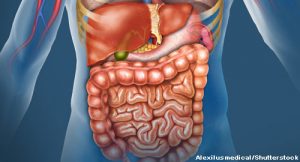 With more than 3.1 million cases of inflammatory bowel disease (IBD) in the U.S., it’s likely most clinicians will encounter many patients with this condition over the course of their careers. Indeed, given the systemic manifestations of IBD, it’s particularly likely rheumatologists will see patients with ulcerative colitis and Crohn’s disease.
With more than 3.1 million cases of inflammatory bowel disease (IBD) in the U.S., it’s likely most clinicians will encounter many patients with this condition over the course of their careers. Indeed, given the systemic manifestations of IBD, it’s particularly likely rheumatologists will see patients with ulcerative colitis and Crohn’s disease.
At the 2021 ACR State-of-the-Art Clinical Symposium, David Rubin, MD, Joseph B. Kirshner professor of medicine and chief of the Section of Gastroenterology, Hepatology and Nutrition, University of Chicago, provided a comprehensive talk on IBD for rheumatologists.
The epidemiology of IBD is fairly evenly split between ulcerative colitis and Crohn’s disease, patients are typically young at the time of diagnosis (i.e., between 15–30 years old), and most patients with IBD don’t have a family history of the condition, Dr. Rubin explained. Interestingly, IBD prevalence is increasing in Western countries, and newly industrialized countries are also experiencing rapidly increasing incidence of IBD.1
The pathogenesis of IBD is believed to involve a combination of genetic factors; environmental factors, such as smoking as a risk factor for Crohn’s disease; microbial dysbiosis, which sometimes occurs after exposure to antibiotics or a gastrointestinal infection; and immune dysregulation.
Dr. Rubin noted several rare, inherited immunodeficiencies greatly resemble IBD, and many treatments for IBD are aimed at immune system modification.
Spondyloarthritis (SpA) is the most frequent extra-intestinal manifestation of IBD and is seen in 10–39% of patients with IBD. This association is more frequently observed in patients with Crohn’s disease than those with ulcerative colitis. When looking at patients with SpA, the prevalence of symptomatic IBD is 6–14%, and it’s more often seen in men and younger patients. Dr. Rubin pointed out that asymptomatic IBD may be present in up to 60% of all patients with ankylosing spondylitis (AS), and 5–20% of patients with AS will develop Crohn’s disease within the first five years of AS presentation.2
Researchers have evaluated potential biomarkers to identify patients with SpA who are at risk of developing IBD. One recent systematic review found fecal calprotectin is a useful, non-invasive biomarker that can help identify at-risk patients.3
Asymptomatic IBD may be present in up to 60% of all patients with ankylosing spondylitis (AS), & 5–20% of patients with AS will develop Crohn’s disease within the first five years of AS presentation.
Management
Dr. Rubin outlined the main goals for clinicians and patients in the management of IBD, including:
- Making a quick and accurate diagnosis;
- Seeking to induce rapid remission of disease to achieve normal bowel function;
- Maintaining steroid-free remission;
- Changing the natural history of IBD to avoid surgery, hospitalizations, disease or drug-related complications; and
- Reducing the overall cost of care to patients and the healthcare system.
As one can see, many of these goals describe a rheumatologist’s approach to the management of systemic autoimmune diseases, such as rheumatoid arthritis (RA) and lupus.

